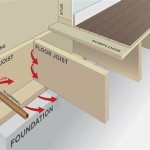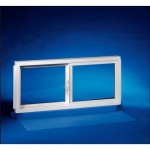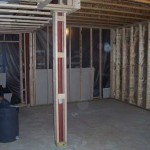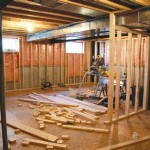What To Put On Concrete Floor In Basement: A Comprehensive Guide
Basement concrete floors, while providing a foundational base, often present challenges for homeowners seeking to create comfortable and aesthetically pleasing living spaces. Unadorned concrete can feel cold, damp, and uninviting, and is susceptible to moisture-related issues. Choosing the right flooring option is crucial for transforming a basement into a functional and enjoyable area. This article explores various materials and treatments suitable for basement concrete floors, outlining their benefits, drawbacks, and installation considerations.
Addressing Moisture Concerns
Before applying any flooring to a basement concrete slab, addressing potential moisture issues is paramount. Concrete is porous and can wick moisture from the ground. Elevated moisture levels can lead to mold growth, damage the flooring material, and compromise indoor air quality. A simple test involves taping a square of plastic sheeting to the concrete floor for 24-48 hours. If condensation forms beneath the plastic, moisture is present and needs to be addressed before proceeding with flooring installation.
Several strategies can mitigate moisture issues. Applying a concrete sealer or vapor barrier is a common approach. Sealers penetrate the concrete pores, creating a waterproof barrier that prevents moisture from rising. Vapor barriers, typically polyethylene sheeting, are installed beneath the flooring material to block moisture transmission. Improving drainage around the foundation of the house and ensuring proper ventilation within the basement can also help control moisture levels.
In cases of severe moisture problems, consulting with a professional waterproofing contractor is advisable. They can assess the situation and recommend more comprehensive solutions, such as installing a sump pump or interior drainage system.
Paint and Epoxy Coatings
Paint and epoxy coatings offer relatively inexpensive and straightforward options for improving the appearance of concrete floors. Paint, typically acrylic latex-based, provides a basic level of protection and aesthetic enhancement. Epoxy coatings, on the other hand, are more durable and resistant to chemicals, stains, and abrasion. Both options are available in a wide range of colors and finishes.
Preparation is crucial for successful paint or epoxy application. The concrete surface must be clean, dry, and free of any contaminants, such as oil, grease, or dirt. Etching the concrete with muriatic acid or a similar product is often necessary to create a porous surface that allows the coating to adhere properly. Cracks and imperfections should be repaired before application.
While paint is a budget-friendly option, it is less durable than epoxy and may require more frequent reapplication. Epoxy coatings offer superior durability and resistance, making them suitable for high-traffic areas and basements used as workshops or garages. However, epoxy can be more challenging to apply and may require professional installation.
It is also important to note that while these coatings offer some degree of moisture resistance, they do not provide a complete moisture barrier. In basements with significant moisture problems, additional waterproofing measures may be necessary.
Tile Flooring
Tile flooring, including ceramic, porcelain, and stone tiles, is a durable and water-resistant option for basement concrete floors. Tile is available in a vast array of styles, colors, and textures, allowing for a wide range of design possibilities. It is also relatively easy to clean and maintain. Because of its inherent hardness, it is typically cooler than other flooring materials.
Before installing tile, the concrete floor must be level and structurally sound. Any cracks or unevenness should be repaired with a self-leveling compound. A thin-set mortar is used to adhere the tiles to the concrete substrate. Grout fills the spaces between the tiles, providing a waterproof seal. Applying a sealer to the grout helps prevent staining and mildew growth.
Porcelain tile is generally preferred for basements due to its low water absorption rate. Ceramic tile is more porous and may be more susceptible to moisture damage. Stone tiles, such as slate or granite, offer a natural and elegant look but may require more maintenance and sealing.
While tile is water-resistant, it is not completely waterproof. If moisture penetrates the grout or seeps up through the concrete, it can damage the tile and cause mold growth. A vapor barrier beneath the tile can help prevent moisture problems.
Engineered Wood and Laminate Flooring
Engineered wood and laminate flooring offer the aesthetic appeal of hardwood or other natural materials without the expense and maintenance requirements. These flooring options are constructed with multiple layers, making them more resistant to moisture and dimensional changes than solid hardwood. Engineered wood features a top layer of real wood veneer, while laminate flooring has a photographic image of wood or other materials covered with a protective wear layer.
Both engineered wood and laminate flooring are typically installed as floating floors, meaning they are not directly adhered to the concrete substrate. A foam underlayment is placed between the concrete and the flooring to provide cushioning, sound insulation, and a moisture barrier. The flooring planks are then clicked or locked together, creating a cohesive surface. Expansion gaps are left around the perimeter of the room to allow for natural expansion and contraction.
When selecting engineered wood or laminate flooring for a basement, it is important to choose products specifically designed for below-grade installations. These products are typically more water-resistant and have antimicrobial properties to prevent mold growth. A high-quality vapor barrier is essential to protect the flooring from moisture damage.
While engineered wood and laminate flooring are more resistant to moisture than solid hardwood, they are still susceptible to damage if exposed to excessive moisture. Promptly addressing any leaks or spills is crucial to prevent warping, swelling, or delamination.
Vinyl Flooring
Vinyl flooring is a popular choice for basements due to its affordability, durability, and water resistance. Vinyl flooring is available in various formats, including sheet vinyl, vinyl tile, and luxury vinyl planks (LVP). Sheet vinyl offers a seamless and waterproof surface, while vinyl tile and LVP provide more design flexibility and are easier to install.
Sheet vinyl is typically glued directly to the concrete subfloor. The subfloor must be smooth, level, and free of any imperfections. Vinyl tile and LVP can be installed using a peel-and-stick adhesive or a click-lock system. Click-lock LVP is a popular choice for DIY installations due to its ease of use.
Vinyl flooring is highly resistant to water damage, making it suitable for basements with moderate moisture levels. However, it is not completely waterproof. If moisture seeps beneath the flooring, it can cause mold growth. A vapor barrier beneath the vinyl flooring is recommended to prevent moisture problems.
Luxury vinyl planks (LVP) are a popular choice due to their realistic wood or stone appearance and durability. LVP is also relatively easy to clean and maintain.
Carpet
Carpet offers a soft and comfortable flooring option for basements, providing warmth and sound insulation. However, carpet is also absorbent and susceptible to moisture damage, making it a less ideal choice for basements with high moisture levels. Direct contact with damp concrete can lead to mold and mildew growth and rapid deterioration of the carpet.
If carpet is desired in a basement, several precautions must be taken to minimize moisture risks. A vapor barrier should be installed beneath the carpet to prevent moisture from rising from the concrete. A waterproof padding should also be used to provide an additional layer of protection. Choosing a carpet type made from synthetic fibers, such as nylon or olefin, is preferable to natural fibers, such as wool, as synthetic fibers are more resistant to moisture and mildew.
Carpet tiles offer a potentially better option than traditional broadloom carpet for basements. Carpet tiles are individual squares of carpet that can be easily installed and replaced. If a section of carpet tile becomes wet or damaged, it can be easily removed and replaced without having to replace the entire floor.
Regular cleaning and maintenance are essential to prevent mold and mildew growth in basement carpets. Promptly addressing any leaks or spills is crucial to prevent moisture damage. Dehumidifiers can help reduce humidity levels in the basement, further mitigating the risk of moisture problems.
Rubber Flooring
Rubber flooring is a durable, resilient, and water-resistant option suitable for basement floors, particularly in areas used as gyms or playrooms. Rubber flooring is available in various forms, including rolls, tiles, and mats. It provides excellent shock absorption and sound insulation. It is also relatively easy to clean and maintain.
Rubber flooring can be glued directly to the concrete subfloor or installed as a floating floor. A smooth and level surface is required for proper installation. Rubber flooring is generally resistant to water damage; however, it is important to address any leaks or spills promptly to prevent moisture from accumulating beneath the flooring.
Some rubber flooring products may have a distinct odor, particularly when first installed. This odor typically dissipates over time. Choosing low-VOC (volatile organic compound) rubber flooring can minimize the odor. Good ventilation in the basement can also help to reduce the odor.
Rubber flooring is available in a variety of colors and patterns, allowing for customization of the basement space.
Concrete Staining and Polishing
Concrete staining and polishing offer a unique and aesthetically pleasing alternative to traditional flooring options. Concrete staining involves applying a chemical stain to the concrete surface, creating a permanent and variegated color effect. Polishing grinds and densifies the concrete, creating a smooth, glossy, and durable surface.
Concrete staining and polishing require specialized equipment and expertise. The concrete surface must be properly prepared by cleaning, grinding, and repairing any imperfections. Concrete stains are available in a wide range of colors, allowing for customization of the floor's appearance. After staining, a sealer is applied to protect the surface and enhance the color.
Polishing involves using progressively finer diamond-impregnated pads to grind and polish the concrete surface. The level of polish can be customized to achieve the desired degree of gloss. Polished concrete is highly durable and resistant to stains and abrasion.
Concrete staining and polishing offer a low-maintenance and long-lasting flooring option for basements. However, it is important to note that these processes can be expensive and may require professional installation.
Choosing the right flooring option for a basement concrete floor requires careful consideration of moisture levels, budget, intended use of the space, and aesthetic preferences. By addressing moisture concerns and selecting appropriate materials and installation methods, homeowners can transform their basements into comfortable, functional, and aesthetically pleasing living areas.

Polished Concrete Flooring Options For Your Basement Duraamen

How To Stain Concrete Basement Floor Diy Guide

15 Diy Basement Flooring Ideas Affordable Options For Basements

A Guide To Stained Concrete Basement Floors

Blog Ideas For Your New Concrete Finished Basement

Marblelife Basement

Bolster Your Basement Concrete Floor Coating Essentials Viking Floors

Diy Basement Floor Stain And Finish 2 Colors Without Etching Youtube

Concrete Basement Cellar Floor Crack Repair In Worcester Ma

Stained Concrete Basement Floor Ideas







